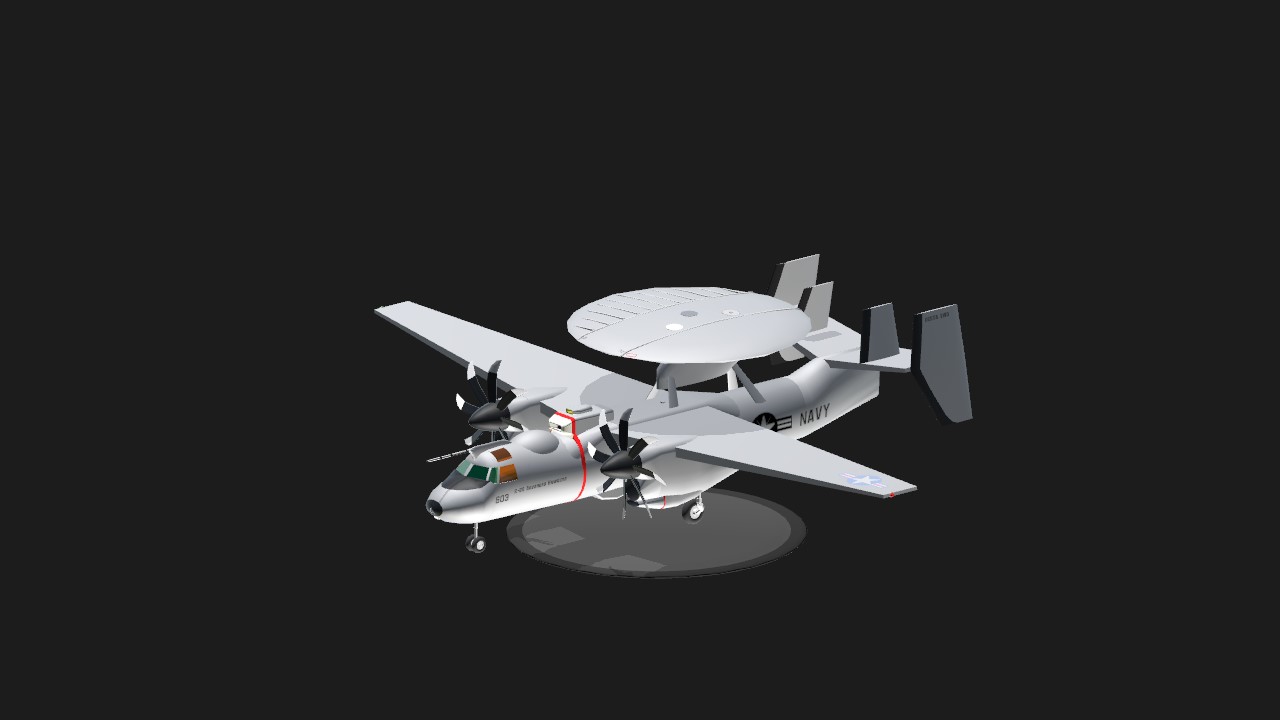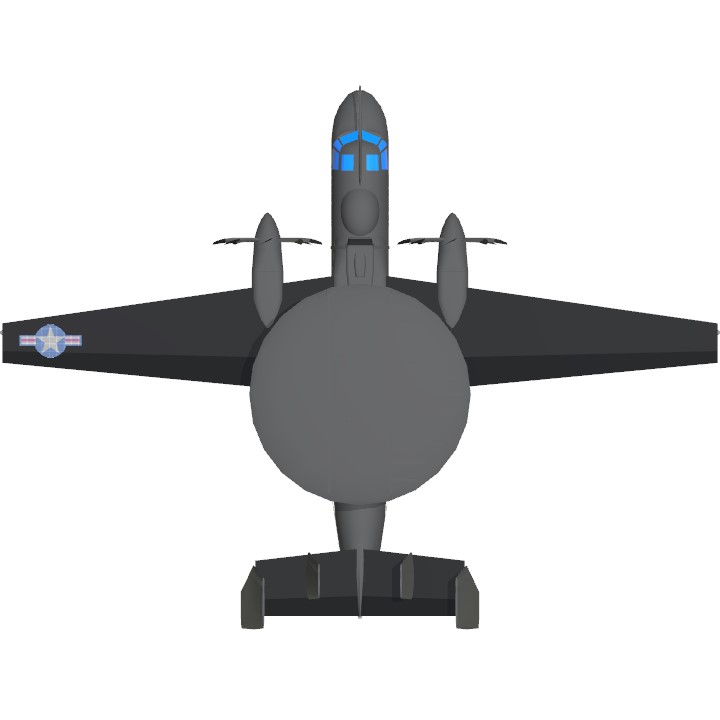MAPA’s E-2C Hawkeye Model
This Aircraft is for Human Use I am unsure if it works for ai

Wiki:
Once considered for replacement by the "Common Support Aircraft", this concept was abandoned. The latest E-2 version is the E-2D Advanced Hawkeye, which features an entirely new avionics suite including the new AN/APY-9 radar, radio suite, mission computer, integrated satellite communications, flight management system, improved T56-A-427A engines, a glass cockpit and aerial refueling.[12][13] The APY-9 radar features an active electronically scanned array (AESA),[14] which adds electronic scanning to the mechanical rotation of the radar in its radome. The E-2D includes provisions for the copilot to act as a "Tactical 4th Operator" (T4O), who can reconfigure his main cockpit display to show radar, IFF, Link 16 (JTIDS)/CEC and access all acquired data. The E-2D's first flight occurred on 3 August 2007.[15] On 8 May 2009, an E-2D used its Cooperative Engagement Capability system to engage an overland cruise missile with a Standard Missile SM-6 fired from another platform in an integrated fire-control system test.[citation needed] These two systems will form the basis of the Naval Integrated Fire Control – Counter Air (NIFC-CA) when fielded in 2015; the USN is investigating adding other systems to the NIFC-CA network in the future.[16]
The APY-9 radar has been suspected of being capable of detecting fighter-sized stealth aircraft, which are typically optimized against high frequencies like Ka, Ku, X, C and parts of the S-bands. Small aircraft lack the size or weight allowances for all-spectrum low-observable features, leaving a vulnerability to detection by the UHF-band APY-9 radar, potentially detecting fifth-generation fighters like the Russian Sukhoi Su-57 and the Chinese Chengdu J-20 and Shenyang J-31. Historically, UHF radars had resolution and detection issues that made them ineffective for accurate targeting and fire control; Northrop Grumman and Lockheed claim that the APY-9 has solved these shortcomings by using advanced electronic scanning and high digital computing power via space/time adaptive processing. According to the Navy's NIFC-CA concept, the E-2D could guide fleet weapons, such as AIM-120 AMRAAM and SM-6 missiles, onto targets beyond a launch platform's detection range or capabilities.[17]
The first E-2D with aerial refueling capability was delivered in September 2019.
Deliveries of initial production E-2Ds began in 2010.[18] On 4 February 2010, Delta One conducted the first E-2D carrier landing aboard USS Harry S. Truman as a part of carrier suitability testing.[19] On 27 September 2011, an E-2D was successfully launched by the prototype Electromagnetic Aircraft Launch System (EMALS) at Naval Air Engineering Station Lakehurst.[20][21] On 12 February 2013, the Office of the Secretary of Defense approved the E-2D to enter full-rate production. The Navy plans for an initial operational capability by 2015.[22] In June 2013, the 10th E-2D was delivered to the Navy, with an additional 10 aircraft in various stages of manufacturing and predelivery flight testing. On 18 July 2013, Northrop Grumman was awarded a $113.7 million contract for five full-rate production Lot 2 E-2D Advanced Hawkeye aircraft.[23] On 13 August 2013, Northrop Grumman was awarded a $617 million contract for five E-2Ds until full-rate production Lot 1.[24] On 30 June 2014, Northrop Grumman was awarded a $3.6 billion contract to supply 25 more E-2D, for a total contracted number of 50 aircraft; 13 E-2D models had been delivered by that time.[25]
In December 2016, an E-2D flew for the first time fitted with an aerial refueling capability. This feature will allow the aircraft to double its time on station to five hours and increase total mission time from four to seven hours. The refueling modification will start being built into the 46th plane (out of 75 planned) for delivery in late 2020 costing an additional $2 million per aircraft and the Navy plans to retrofit the feature on all previous Hawkeyes for $6 million per plane.[26]
Variant:
E-2D A variant with new avionics suite, improved engines, a new "glass cockpit" and the potential for air-to-air refueling.

E-2D of VAW-125 over NS Norfolk

The first E-2D with aerial refueling capability was delivered in September 2019
Specifications
Spotlights
- dabestsock 5 months ago
General Characteristics
- Predecessor Northrop Grumman E-2C Hawkeye
- Successors 1 airplane(s) +35 bonus
- Created On iOS
- Wingspan 149.2ft (45.5m)
- Length 113.8ft (34.7m)
- Height 36.1ft (11.0m)
- Empty Weight N/A
- Loaded Weight 23,728lbs (10,762kg)
Performance
- Horse Power/Weight Ratio 0.21
- Wing Loading 19.2lbs/ft2 (93.8kg/m2)
- Wing Area 1,235.4ft2 (114.8m2)
- Drag Points 11832
Parts
- Number of Parts 237
- Control Surfaces 7
- Performance Cost 885






@PannerTerkins i know the request is odd but can you make wings fold like in the real life